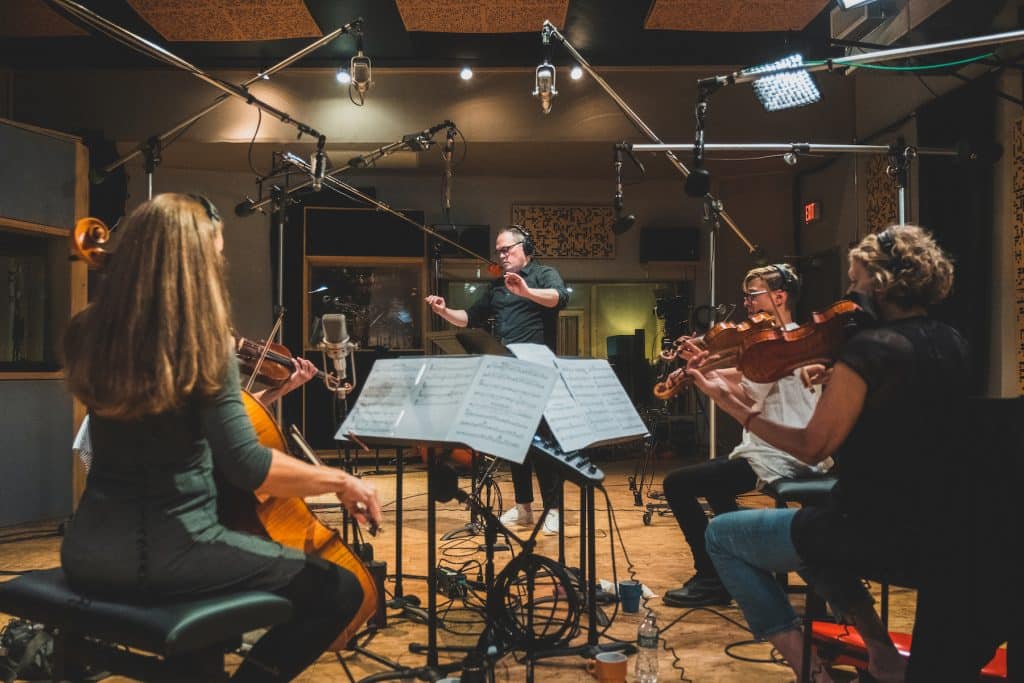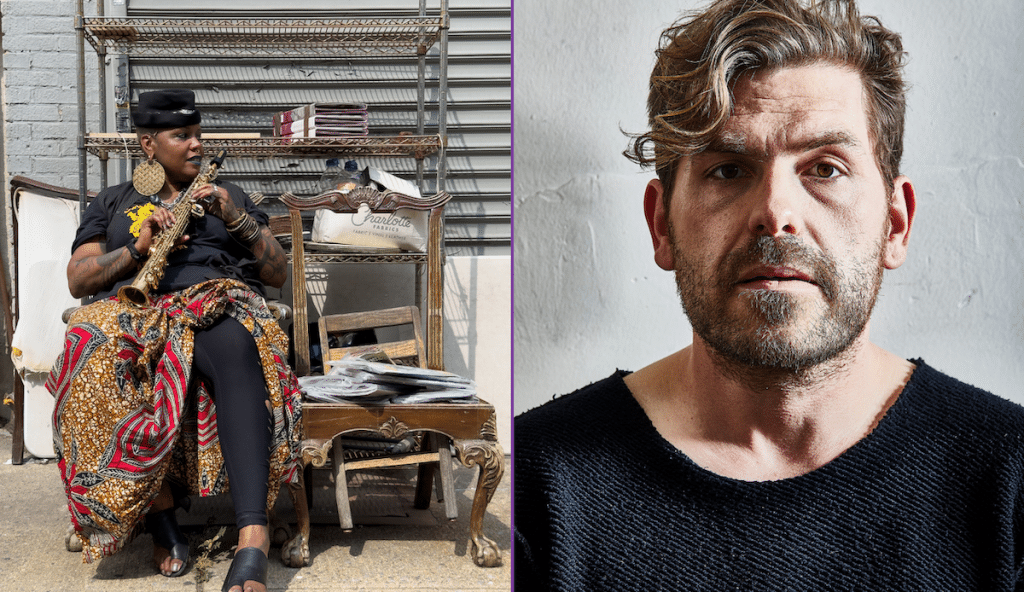The Last Piece of the Puzzle
A growing movement to program sensory-friendly performances is bringing music and community to long-underserved populations.
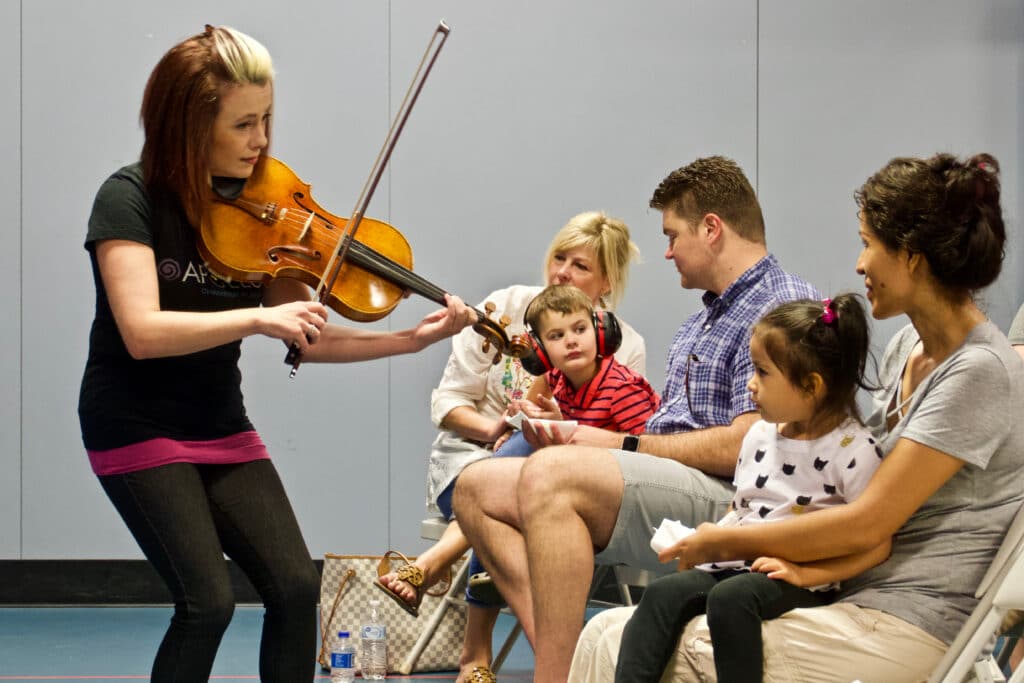
When Harry Smolin goes to see a Broadway show, he likes to have certain assurances in advance: he prefers to sit by the aisle, so he can get up and walk to the lobby easily as need be; he finds depictions of violence uncomfortable, so he gets acquainted with these kinds of story lines in advance; and, to calm his nerves, he’ll sometimes pick at a small toy or other object, and wants to know he can do so without reproach.
Smolin is autistic, and not unlike many others on the autism spectrum, he loves live performance, Broadway in particular. In fact, Harry is one of the more impassioned theater-goers you’re likely to meet. He has an extensive knowledge of all things Broadway, and he has attended dozens of shows over the years.
But for Smolin, as for many on the autism spectrum, live performances can be fraught with difficulties. Sensory sensitivities are a common feature of Autism Spectrum Disorder (ASD), as well as of various other neurological and cognitive differences. These sensitivities mean that many of the visual and auditory hallmarks of music, dance, and theater performances—a dark house with a restrictive social atmosphere, frequent and dramatic changes in volume and lighting, long periods sitting still—can be a source of significant anxiety and discomfort.
Around eight years ago, a New York-based organization called the Theatre Development Fund (TDF) began working to address these challenges for shows on Broadway, spurred in large part by direct feedback from the city’s special education professionals.
“We have an ongoing and very successful program for students who are hard of hearing or deaf and need sign language interpreting and captioning, as well as for students who are blind or have low vision and need audio description,” said Lisa Carling, TDF’s director of accessibility programs. “We heard from special education teachers, ‘what can you do for our students on the autism spectrum?’ Because the city schools are full of classrooms with kids who have autism or other developmental or cognitive disabilities.”
Carling and her staff began reaching out to experts in the autism field, as well as to educators and parents of children on the spectrum, for input on how to craft what are now widely known as “sensory-friendly performances.” (Such performances are also variously identified as “autism friendly” or “relaxed.”) Smolin became one of a handful of key advisors, often attending shows and delivering feedback on his personal experience.
Carling notes that, in New York City and the surrounding area, the need was especially high. “New Jersey has the highest rate in the country of children being diagnosed with autism,” she said, at one in thirty-five.
One of the experts Carling encountered was Roger Ideishi, a professor of occupational therapy at Temple University’s school of public health. Like Carling and her staff at TDF, Ideishi found his way into sensory-friendly programming through his other accessibility work with student populations. “We noticed that there often wasn’t a transfer or a generalization from what was happening in the classroom into what was happening at home or what was happening in the community,” he said.
To address this disparity, Ideishi brought in a group of graduate students to research potential community partnerships. Initially, they cast a wide net, reaching out to a variety of organizations and spaces—libraries, zoos, museums, grocery stores, anywhere affected families said they hoped to feel an increased sense of belonging.
“We didn’t start out by looking at arts organizations,” Ideishi said. “But what started to become apparent over the first couple years was that arts organizations were the most enthusiastic and motivated and receptive to exploring this.”
Gradually, Ideishi and his team began solidifying partnerships with arts organizations in Philadelphia, including the Walnut Street Theater and Pennsylvania Ballet, which in turn led to programs with the Kennedy Center and the Pittsburgh Symphony.
“It just snowballed,” he said.

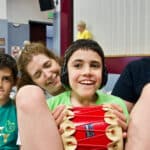

A sensory-friendly performance isn’t in fact much different from a conventional performance. Ideishi emphasizes that for the performer, little will change. “We’re not going to ask the musician to change anything that they’re doing,” he said. “You can’t really tell a trumpet, ‘just play really, really soft.’ I mean, that’s not reasonable.”
There are, however, certain relatively standard modifications that are recommended across disciplines. Carling says that, when TDF advises organizations newly interested in programming sensory-friendly performances, they suggest raising the house lights approximately 30%; avoiding the use of any stage lights that pan out into the audience; capping volume at approximately 90 decibels; and establishing a quiet area in the venue where attendees can recharge as need be.
As a very first step, Ideishi recommends convening an advisory team, made up of professionals and members of the disability community, which will help establish trust in the arts organization and in its intentions. “You want to include people from the community, you want to include artists, include practitioners, include administrators—everybody that needs to be at the table.”
Providing training for house staff is of particular importance. “Really the most important piece that we found was that the staff at the venue—whether it was the usher staff or box office staff—understood the community of disability, understood their needs, understood their wants and desires,” he said. “A lot of training has to happen in order for staff to feel knowledgeable and confident in communicating with the disability community.”
Still, he says, there isn’t much cost entailed. “You may need to hire an occupational therapist just for a couple hours, or a person with a disability, just do a little consulting,” Ideishi said.
Both Carling and Ideishi emphasize that most of the work that goes into creating a sensory-friendly performance is preparation—for the arts organization itself, but especially for the attendees.
“The best way I can analogize it,” Ideishi says, “is when you travel to a foreign country, and you don’t speak the language, you don’t know the culture—what’s the thing that really helps to reduce your anxiety? It’s having information that you can think about beforehand so you can prepare strategies to use when you encounter some of these unfamiliar situations.”
Along those lines, TDF supplies “social narratives”—short guides to the practical experience of attending the show, with images of the exterior and interior of the building, the venue’s amenities, a rundown of the box office experience, and what audiences can do if they feel uncomfortable at any point.
“What we remind ourselves of is that parents who walk through the door for these events have already had a very long day, from the time they get their child or adult up, get dressed, have breakfast, get out of the house, the travel time,” Carling said. “So we want them to walk through those doors into the lobby and just know this is one safe place where they can relax.”
Ideishi often calls the final result of well-executed sensory-friendly performance an “anticlimactic climax.”
“If you’ve done a really good job of preparation,” he said, “honestly, nothing really happens. Because everybody’s prepared, and everybody can move through the experience and take from the experience what they can or want to take.”
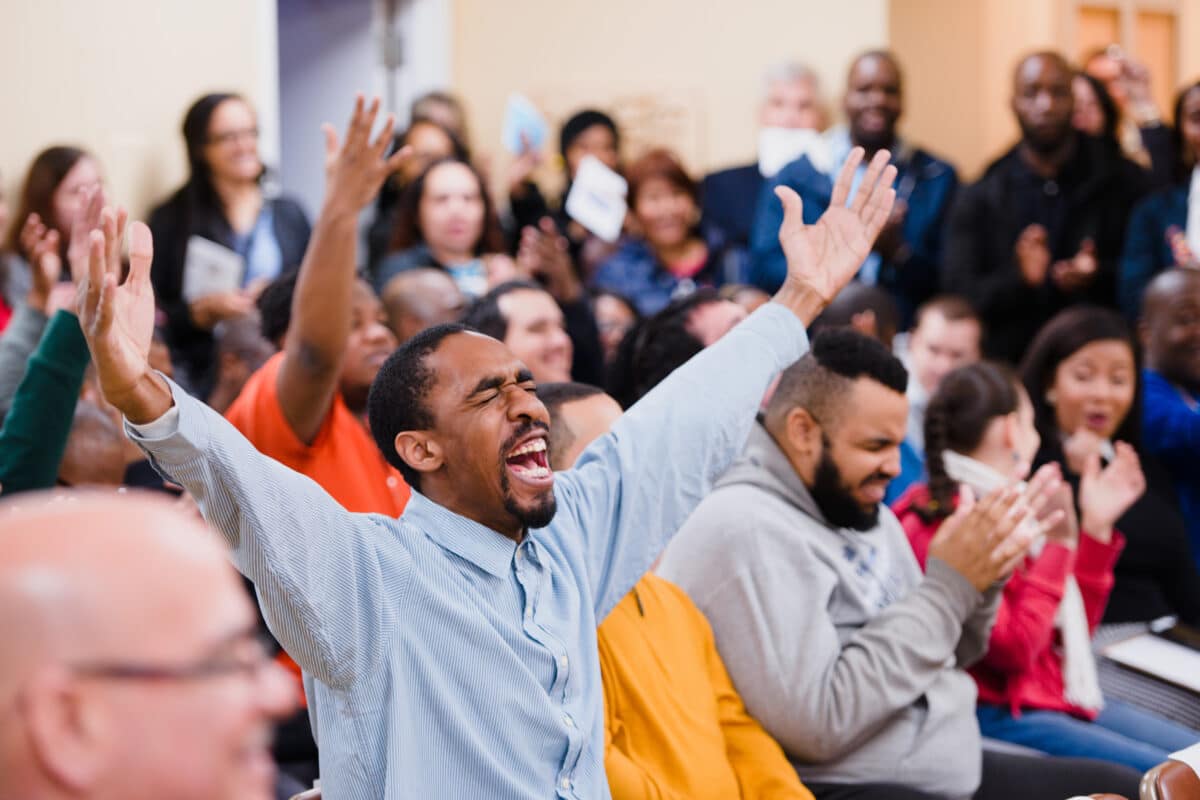
In 2012, the New Jersey Symphony Orchestra became one of the first music organizations in the US to program a series of sensory-friendly performances, offering chamber music concerts in a variety of community settings. The Pittsburgh Symphony programmed its first sensory-friendly orchestral concert, a multimedia event featuring works by Strauss and live painting, in 2015. Since then, many other American orchestras have followed suit.
Perhaps due to the small footprint of many ensembles and chamber music presenters, this type of programming remains relatively uncommon in the chamber music field. But word seems to be spreading.
Among the field’s recent adopters are the Apollo Chamber Players, based in Houston, TX, whose mission has long featured a substantial outreach component. The group played their first sensory-friendly concert, programmed by the nonprofit organization Music for Autism and using the organization’s established concert model, in June of this year.
“We’re trying to make our outreach programs more robust and to reach as many people in Houston as we can,” said Apollo violinist and director Matt Detrick, who also notes that Music for Autism’s model emphasizes bridging socioeconomic divides in the disability community; admission to the concert was free.
The concert, held at the Westview School in Houston, was broken into three sections: a short performance, an interactive conducting component, and a hands-on percussion component. Apollo frequently opens its performances by playing a short piece as its members walk into the venue, and this concert was no exception. Other repertoire was chosen for engagement and interactivity, and included original arrangements of European and Mexican folk songs, a polka, and a movement from Florence Price’s Five Folksongs in Counterpoint.
“There was maybe just a little bit of reservation in the air in the beginning,” Detrick said. “But towards the end, everyone just opened up. It was this really accepting feeling.”
Detrick says that, apart from the obvious positives for audience members, this kind of performance has holistic benefits for performers. “Anytime you can do concerts like this, that will help you break down that fourth wall in a more traditional concert setting,” he said. “And I think that’s really important, because it then enables performers to reach all of their audiences in a more meaningful fashion.”
Carling reports receiving similar feedback from the performers TDF advises. “Cast members loves these productions,” she says. “They can feel the engagement that the audience has. They can feel the love coming right onto the stage for them. This audience is with them all the way. They can hear them very often singing along or answering questions back or applauding.”
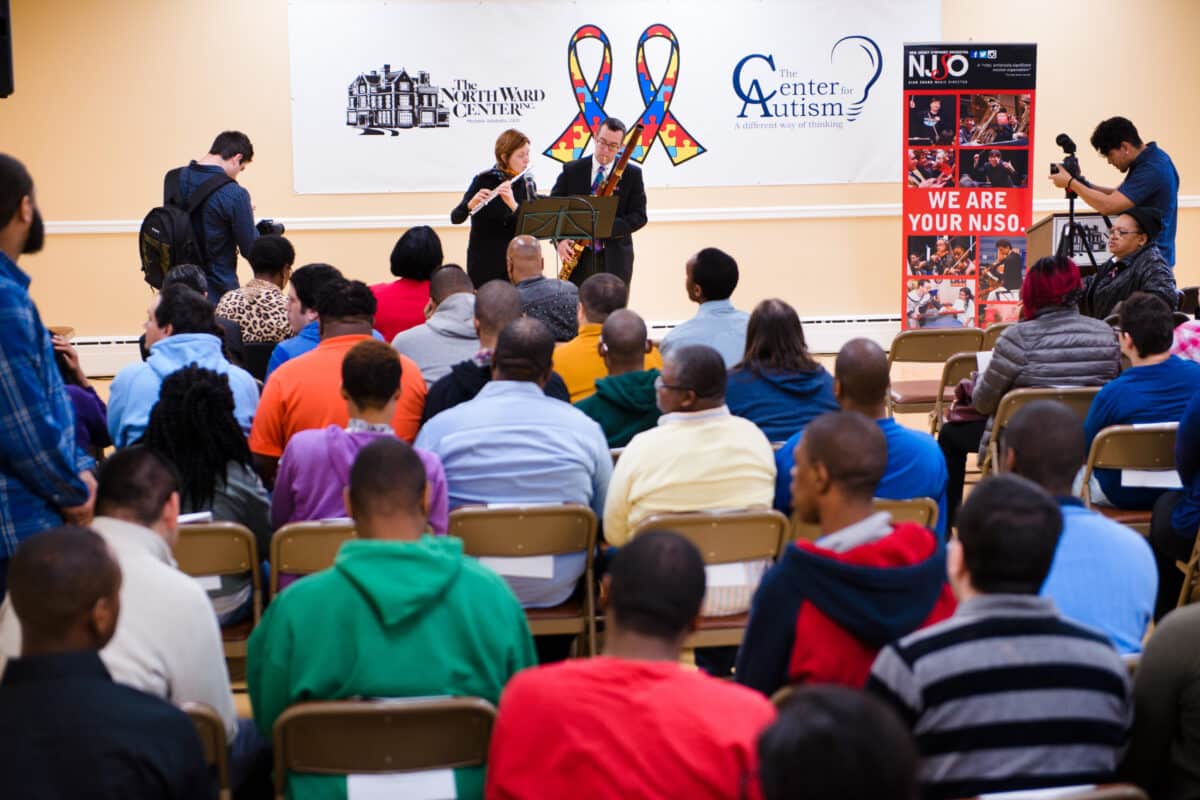
In recent years, the concept of “neurodiversity” has gained increasing prominence across fields and in popular discourse. Used widely within the autism community itself, the term refers to the many naturally-occurring variations in human cognition—encompassing diagnoses such as autism, attention deficit hyperactive disorder (ADHD), and dyslexia—without pathologizing or labeling them as disordered. (Those outside of these categories are referred to as “neurotypical.”)
Autism in particular has undergone a quiet revolution in understanding. Once considered to be an extremely rare condition—in the early 1980s, prevalence was estimated to be roughly 1 in 2500—the diagnostic criteria broadened substantially in recent decades, which, coupled with a proliferation of awareness and of experts trained in evaluation, led to a marked increase in diagnoses. The CDC currently estimates that one in 59 people in the US is affected by ASD, a figure that arguably positions autistic people as one of the largest minority groups in the nation.
Much of the conversation around neurodiversity centers on strength-based education and its benefits for neurodiverse people. People with autism often thrive in educational and professional environments different than those tailored to neurotypical people, and there is ample documentation of giftedness within the autism community. However, shifting the paradigm away from an exclusively neurotypical perspective is, in many contexts, an uphill battle.
Mainly Mozart, the San Diego-based presenter and festival, has for the last two years been exploring this tension in the context of classical music. It’s annual Mozart & the Mind symposium, originally themed broadly around cognition and the concept of genius, has since narrowed its focus to autism specifically. “We found that it resonated so strongly in the community with parents, and with artists,” said Nancy Laturno, the organization’s executive director.
Mainly Mozart’s 2019 symposium, held this spring, featured a presentation by the animal scientist and author Temple Grandin, perhaps the most well-known public figure with autism; panel discussions with a variety of experts; a performance by the autistic pianist Derek Paravicini; and sensory-friendly concerts for autistic individuals and their families. The goal was to create an environment that was both educational and validating.
“Using our staff as a microcosm, we’re learning every day from artists about what autism is,” said Laturno. “And if we can help share that understanding even a little bit with the community at large, we’ve done something important.”
“We’re so quick to marginalize other people,” she added. “What this is about is celebrating everybody’s strengths and potential, rather than focusing on what we can’t do.”

For Carling and Ideishi, as for many working on the ground floor of sensory-friendly experiences, the current offerings are just the beginning. “It’s sort of the last piece of the puzzle, if you will, in terms of providing full accessibility for people,” said Carling.
Ideishi emphasizes that, for the families he’s long worked with, this kind of programming is deeply meaningful—and long overdue.
“Oftentimes, when they go out into the community, they’re judged, or they’re directly ridiculed,” he said. “Many families feel like they don’t feel like a whole family because only part of the family can go to the concert, while the other part of their family always has to stay home.
“Part of this is opening a conversation with an arts organization and asking: ‘Are you here to serve just the audience that you want to serve?’ Or do you really believe that art can actually touch everybody in society, whoever they are—whether they’re rich, whether they’re poor, whether they have a disability or not?”
Ideishi is happy to report that more and more people in the performing arts seem to be asking these kinds of questions. He and his team now get calls from new organizations every week, asking how to implement sensory-friendly programs of their own.
“It’s like you see this big wave on the horizon,” he said. “I think that’s where a lot of the organizations are at now. They’re going, ‘We see this thing coming at us. I think we better start to get ready.’”

